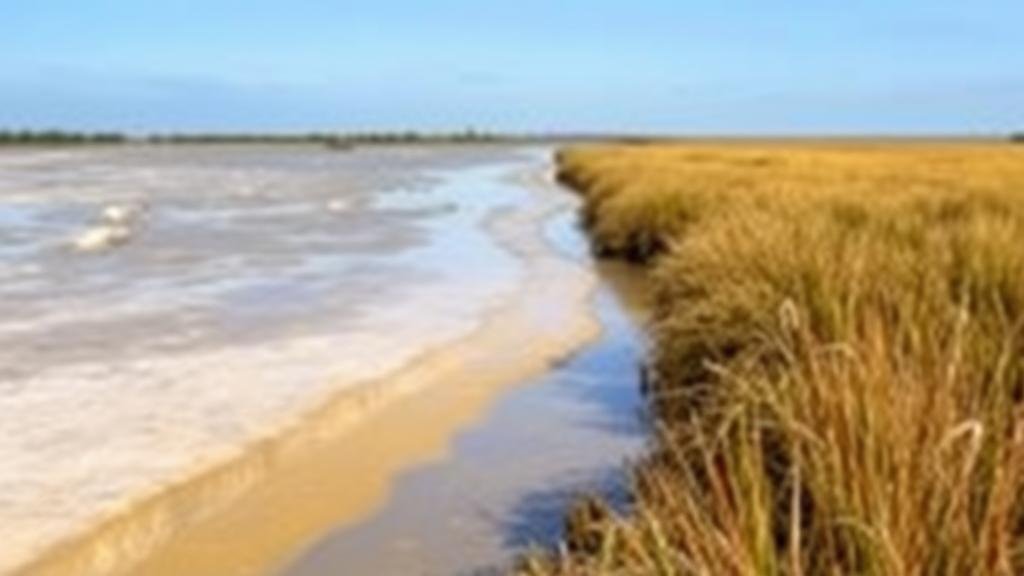Detecting Along Long-Dry Marshlands Exposed by Modern Draining Projects
Detecting Along Long-Dry Marshlands Exposed by Modern Draining Projects
Marshlands, often rich in biodiversity and ecological significance, are increasingly affected by modern draining projects aimed at land reclamation and agricultural development. The detection and analysis of long-dry marshlands exposed by such projects is crucial for understanding ecological impacts and guiding restoration efforts.
The Importance of Marshland Ecosystems
Marshlands serve as vital ecosystems that support a variety of wildlife, improve water quality, and buffer against flooding. According to the Ramsar Convention on Wetlands, these areas provide habitat for over 40% of the world’s plant and animal species. But, the draining of marshlands can lead to significant ecological degradation.
- Absence of Natural Water Flow: Draining projects disrupt hydrology, leading to sedimentation and altered vegetation patterns.
- Reduces Biodiversity: Many species depend on marshland habitats; their removal or alteration can result in population declines.
Detecting Historical Marshlands
Detecting areas of historical marshlands that have been long-dry due to drainage requires a combination of remote sensing technologies and ground-truthing methods. Remote sensing provides a broad overview, while ground-truthing allows for on-site confirmation.
- Remote Sensing: Satellite imagery can identify changes in land cover and vegetation health. Landsat satellites, for example, have been monitoring land changes since the 1970s, providing valuable data over time.
- Ground-Truthing: Field surveys conducted by ecologists help verify satellite data findings. Techniques such as soil sampling and biodiversity assessments provide concrete evidence of marshland condition.
Innovative Technologies in Detection
The integration of innovative technologies enhances the accuracy and efficiency of detecting long-dry marshlands. Several methods that have proven effective include:
- LiDAR (Light Detection and Ranging): LiDAR technology can produce high-resolution topographical maps that reveal subtle changes in marshland topography, aiding in the identification of previously flooded areas.
- Geographic Information Systems (GIS): GIS can analyze spatial data and help visualize the impact of draining projects, facilitating better management decisions by highlighting areas in need of ecological restoration.
Case Studies: Evidence of Change
Several significant case studies provide evidence of the ecological impact of marshland draining:
- The Florida Everglades: Extensive drainage for agriculture and urban development has led to altered water flow and severe biodiversity loss. Initiatives are underway to restore natural water flows and rehabilitate affected areas.
- The Netherlands: Historical peatland drainage has resulted in land subsidence and carbon emissions. Rewetting projects implemented to restore these areas, demonstrating the importance of recognizing long-dry marsh areas.
Challenges in Detection and Restoration
While modern techniques have advanced the detection of long-dry marshlands, several challenges must be addressed:
- Data Accessibility: Limited access to historical data may hinder accurate assessments of change over time.
- Biodiversity Metrics: Establishing clear metrics for biodiversity post-restoration can be complex and requires extensive biological surveys.
Actionable Takeaways
For conservationists, researchers, and policymakers, a structured approach to detecting long-dry marshlands is essential for informed decision-making:
- Use a combination of remote sensing and ground-truthing to accurately detect changes in marshland ecosystems.
- Incorporate innovative technologies such as LiDAR and GIS in conservation planning and restoration projects.
- Engage in community education and participation for effective ecological restoration and conservation strategies.
To wrap up, understanding the dynamics of long-dry marshlands exposed by modern draining projects is integral to preserving these vital ecosystems. By leveraging technology and collaborative efforts, it is possible to mitigate the consequences of draining and promote restoration, thereby securing these habitats for future generations.



